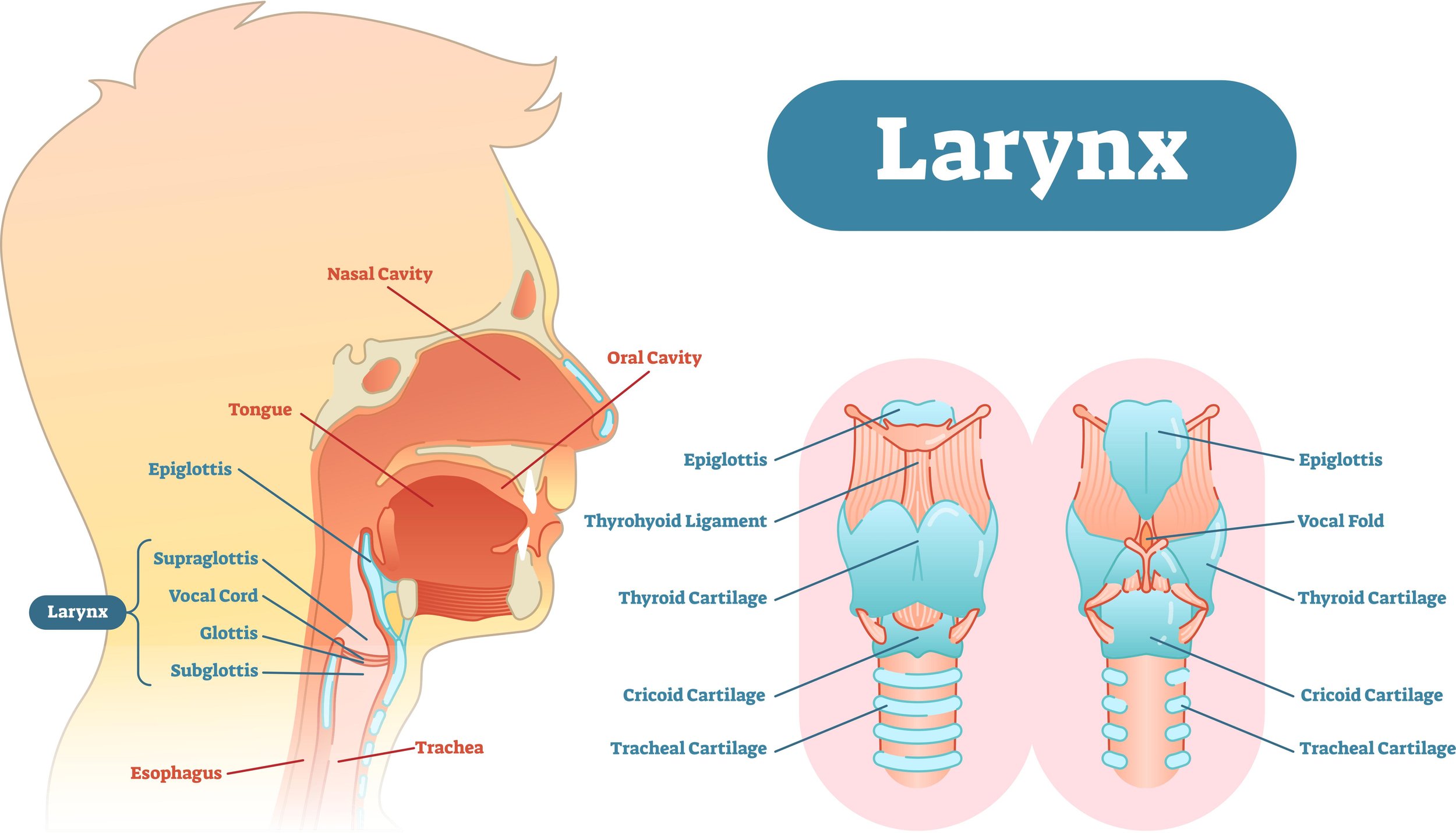What are The Four Vocal Registers?
Vocal registers are commonly misunderstood, and many instructors use different terminology to describe similar things.
Learning about vocal registers can be really helpful when you’re working on vocal feminization or vocal masculinization because it will give you a better understanding of what’s happening with your vocal folds in different pitch ranges, and help you achieve different sound qualities.
Below, I’m going to explain what vocal registers are, how the vocal folds function differently in each one, and explain the difference in their unique sound qualities.
How do the vocal folds work?
First, let’s talk about how our vocal sound is produced. In order for us to make vocal sounds, air passes through our vocal folds, which are two bands of tissue housed in our larynx, causing vibration. That vibration creates a buzz sound that is filtered as it travels through our vocal tract, becoming the sound that we end up hearing. Our vocal tract includes our larynx, the cartilage structure where our vocal folds live, pharynx or throat, tongue, soft palate, nasal cavity and lips.
In order to change pitch, the vocal folds are lengthened or shortened, and they vibrate in different positions. These positions of the vocal folds create unique and recognizable sound qualities within these certain pitch ranges that we call registers.
There are four registers of the voice that all people, no matter what sex they were assigned at birth, have the ability to access. There’s a lot of differing opinions on registers and different teachers will use different terminology to describe similar things, so I’m going to try to include those as I go.
1. Vocal Fry Register
Vocal fry is the lowest of the four registers, and it sounds like this a crackling, popping, or creaky sound. By adding little breath flow through shortened, loose vocal folds, air will bubble through, resulting in the vocal fry sound. We often hear this sound at the ends of phrases in speech. And it can also be used in therapeutic ways to help your vocal folds stay relaxed and lightly compressed.
Vocal fry is not harmful to your voice, but if you’re hearing too much of it in your speech, it could mean that you need to work on breath management.
2. Modal Register
Next is the modal register, which is where we speak. You may have heard this called chest voice, or TA dominant. In this register, thyroarytenoid muscles cause the vocal folds to be thick and short, and the entire vocal fold comes into contact as air passes through.
Because of the size and shape of the vocal folds, and because there is so much contact as they vibrate, the modal register feels strong, comfortable, and you might feel more sympathetic vibrations in your chest.
As you move up in pitch in the modal register, the vocal folds will begin to stretch and get thinner, so that as they vibrate, less surface is in contact. There’s a physical limit to how high in pitch you can go in this position, so eventually, your vocal folds will change over to a new vibratory pattern in order to continue rising in pitch. You’ll probably feel a flip or click in your voice as it changes over to what we call falsetto, or head voice.
3. Falsetto Register
In falsetto, the cricothyroid muscles stretch the vocal folds, the vocalis muscle is relaxed, and just the ligamentous edges of the vocal folds vibrate. Some describe falsetto as CT, or cricothyroid dominant because of this. The tone quality is more hollow, flute-like, and breathy, and you might feel like you’re not able to project as much as you can in the modal register.
4. Whistle Register
The highest register is the whistle register. It’s a bright, thin vocal sound that we get when just a portion of the vocal folds come together and vibrate, leaving some space open between your vocal folds. You may have heard singers like Mariah Carey or Ariana Grande sing really high pitches in the whistle register.
There are general pitch ranges where most people feel these shifts in register, but the exact notes differ from person to person. You’ll also find that there will be some overlap of notes that you can sing in either modal or falsetto voice.
Mix voice is a term that a lot of singing teachers use to describe some combination of registers to achieve different sounds.
If you’re just getting to know your vocal registers, play around with low, middle, and high notes, to see how they feel. Then you can glide from low to high back down. Record yourself and listen for changes in sound quality, and notice what sensations you feel and what kind of effort it takes to make those sounds.





















